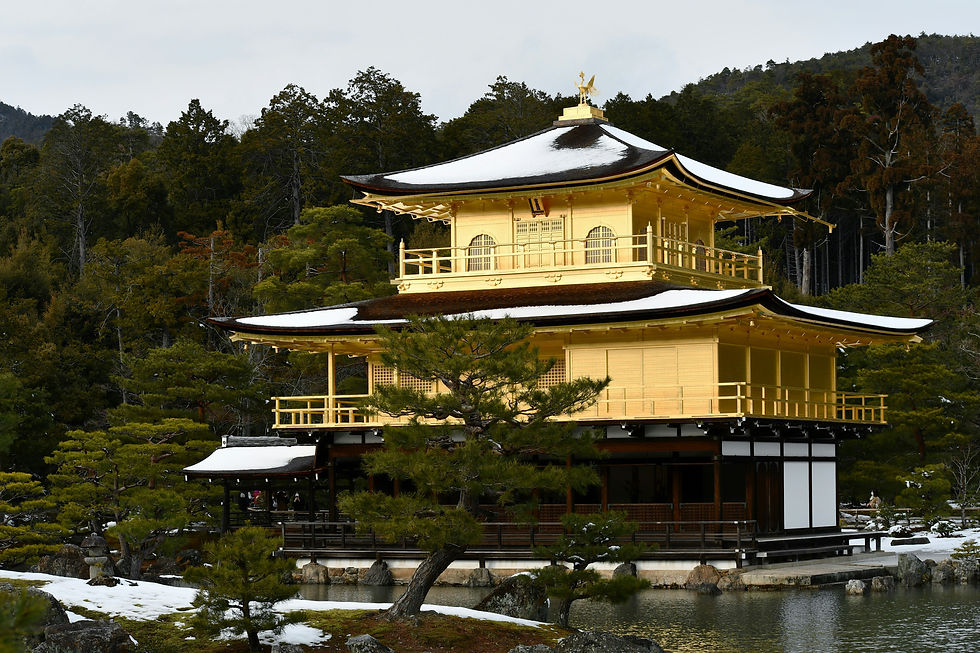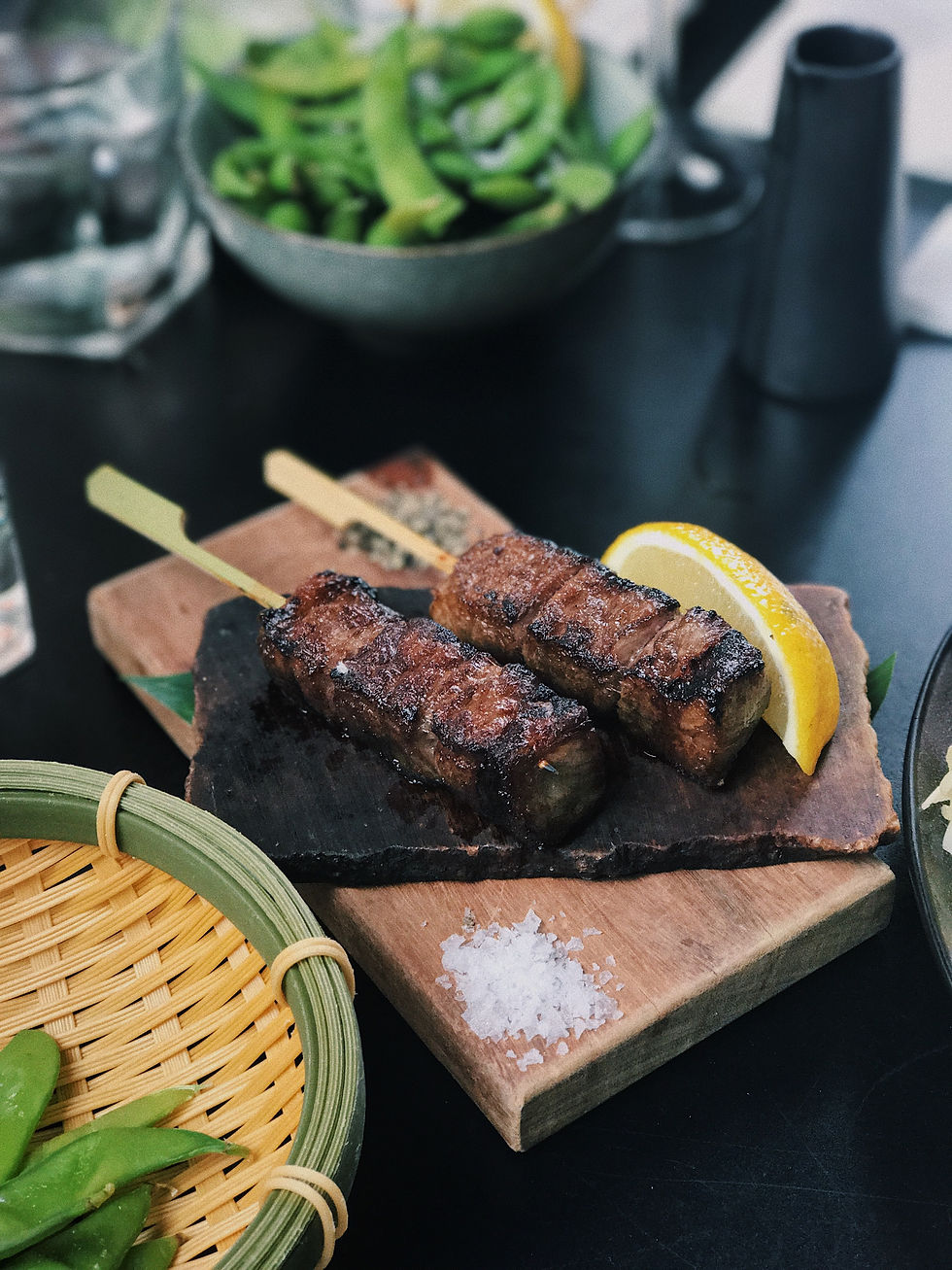Kyoto Winter 2025-2026 Travel Guide: What to Do, Where to Stay, What to Wear
- Kyoto Localized

- 5 minutes ago
- 4 min read

Visiting Kyoto in winter may not be the most popular idea, but it’s worth considering for some people. If you are expecting the pink cherry blossoms of Instagram or the fiery red maples of autumn, you will be disappointed.
However, if you are looking for the "Old Kyoto"—the quiet, spiritual, and atmospheric city that existed before the masses of tourists arrived—winter is the only time you can find it.
If you are mulling over visiting Kyoto in the winter, here’s a useful guide for you:
Kyoto Winter 2025-2026: What to Wear
Dressing for Kyoto in winter requires a specific strategy because of one unique factor: the extreme temperature difference between indoors and outdoors.
Kyoto in winter is distinctly different from Tokyo. While the temperatures on paper look similar (highs of 9°C and lows of 1°C), the sensory experience is much colder.
Locals call this "Soko-bie" (bottom chill). Because Kyoto is situated in a basin surrounded by mountains, the cold air settles at the bottom and radiates up from the ground.
Furthermore, unlike Tokyo, where you pop in and out of heated buildings, in Kyoto, you spend most of your time outdoors or in unheated wooden temples.

When it comes to clothing, here are some reminders.
You will visit many temples (like Kinkaku-ji or Kiyomizu-dera). You must take your shoes off to enter the main halls. The floors are centuries-old wood that feels like blocks of ice.
Do not wear thin cotton socks. Bring heavy hiking socks or wool blends. Some travelers wear a thin silk or Heattech sock underneath a thicker wool one.
Wear shoes that are easy to slip on and off. Lacing up tall, complicated boots 10 times a day with frozen fingers is miserable. Chelsea boots or slip-on walking shoes are ideal.
Because of the "Soko-bie," jeans alone are often not enough. You absolutely need thermal leggings (tights/long johns) under your pants.
If you wear a skirt, it must be a long wool one paired with the thickest fleece-lined tights you can find.
In Tokyo, a stylish wool coat is fine. In Kyoto, a down jacket (puffer coat) is generally better because it traps heat more effectively against the damp basin cold weather.
The wind can blow down from the mountains, so a wind-resistant outer shell is helpful.
Bring your heat packs, hats/beanies, scarves, and gloves.
ALSO READ: 5 Best Maid Cafés in Kyoto
Kyoto Winter 2025-2026: Where to Stay
For a winter stay in Kyoto, prioritize transportation access (to minimize walking in the cold) and warming amenities like onsens or heated floors. The city is generally colder than Tokyo due to its basin geography ("bottom chill"), so your hotel choice matters more here.
The area around Kyoto Station is the most practical choice in winter. You have immediate access to the subway, buses, and Shinkansen, plus extensive underground malls (Porta, The Cube) full of restaurants where you can eat without stepping outside.

If you want to be near the action, shopping, and nightlife (Pontocho Alley), stay here. It's walkable to Gion but has better transport links than Gion itself.
Higashiyama is the most beautiful area, but transport can be tricky. Stay here if you want to wake up and walk to Kiyomizu-dera or Yasaka Shrine early in the morning.
Kyoto Winter 2025-2026: What to Do
Kyoto in winter offers a unique blend of serene cultural experiences and vibrant seasonal events. While the famous Arashiyama Hanatouro has ended, other light-ups and special openings make up for it.
1. Experience "Winter Special Openings" (January - March 2026)
This is the highlight for culture lovers. Normally closed temples open their doors specifically for this season. Here are some temples you should visit around this time:
Kodai-ji Temple: See the golden fusuma paintings and Hideyoshi's treasured items.
Hoko-ji Temple: View the massive Buddha statue and the famous bell that sparked a war.
Daitoku-ji Temple: Explore the Zen complex with special access to sub-temples like Hatto Hall.
2. Watch Magical Winter Illuminations and Festivals
While the Hanatouro is gone, Arashiyama Bamboo Grove itself is open 24/7. Go very early (7 AM) or late at night for a ghostly, empty winter walk. The lack of crowds is the real "event" here.
Check out Kifune Shrine Winter Light-up too. If it snows, head here immediately. On select snowy Saturdays in January/February, they light up the vermilion lanterns lining the stone steps. It is arguably the most photogenic winter scene in Japan.
Attend the Setsubun Festival (Feb 2-3) to witness “maiko” (apprentice geisha) dance and throw beans to ward off demons at Yasaka Shrine or Kitano Tenmangu. It’s lively, colorful, and very traditional.
3. Witness Early Plum Blossom Viewing
Before cherry blossoms, the plum blossoms bloom in late February. They are pink, fragrant, and far less crowded. At Kitano Tenmangu Shrine, you get the best spot in Kyoto. They host a "Baikasai" (Plum Blossom Festival) on Feb 25th with a massive outdoor tea ceremony hosted by Geisha. Also, Jonangu Shrine is known for its weeping plum blossoms that look like pink waterfalls.
ALSO READ: Where to Stay in Kyoto: 5 Best Areas to Stay
Looking for a fun food tour in Kyoto? Join our local guides for the Nishiki Market Kyoto Food Tour, where we will take you to the best food spots at Nishiki Market and let you feast on various delicious dishes.
Sign up today! Limited slots only.





Comments